DJANGO
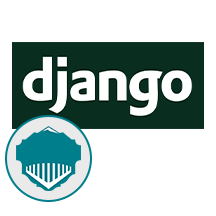
- Framework
About

Django is an open source Python Web framework that encourages rapid development along with clean, pragmatic design. It is built by experienced developers, which ensures hassle-free Web development to make users focus on writing an application without needing to reinvent the wheel. A web application framework is basically a toolkit of components all web applications need.
Niles partners, one of the leading IT solutions providers is configuring DJANGO, a high-level Python Web framework which is embedded with Ubuntu along with ready-to-launch VM on Azure that contains Python, Pip.
Today, one of the most significant advantages of learning Python is the ability it provides to the users to use Django web framework. It has been speedily gaining popularity for its pragmatic design and as well as for ease of use.
The aim is to allow developers to instead of implementing the same solutions over and over again, focus on the parts of their application that are new and unique to their project. In fact, Django framework is much more fully featured than many other frameworks available in the market. Additionally, this python web framework allows users to model their domain and code classes, and in no time they already have an ORM.
Why is Django a good web framework choice?
Best Security
It’s fast and simple
It is Versatile
Great Compatibility
Debugging Tools
It Supports MVC programming paradigm
It suits any web application project
Readability Factor
Designed as a batteries-included web framework
It’s well-established
Scalability
Robust Built-In Template System
Simple Syntax
The Django project’s stability, performance, and community have grown tremendously over the past years since the framework’s creation. Detailed tutorials and good practices are easily available on the web and in books. The framework continues to add significant new functionalities like database migrations with each release.
Django on Azure is a crucial addition to projects that need to handle large volumes of content, user interactions or heavy traffic, or deal with complex functions or technology. Still, it is simple enough for smaller-scale projects, or for projects with a much higher level.
- Type virtual machines in the search.
- Under Services, select Virtual machines.
- In the Virtual machines page, select Add. The Create a virtual machine page opens.
- In the Basics tab, under Project details, make sure the correct subscription is selected and then choose to Create new resource group. Type myResourceGroup for the name.*.
- Under Instance details, type myVM for the Virtual machine name, choose East US for your Region, and choose Ubuntu 18.04 LTS for your Image. Leave the other defaults.
- Under Administrator account, select SSH public key, type your user name, then paste in your public key. Remove any leading or trailing white space in your public key.
- Under Inbound port rules > Public inbound ports, choose Allow selected ports and then select SSH (22) and HTTP (80) from the drop-down.
- Leave the remaining defaults and then select the Review + create button at the bottom of the page.
- On the Create a virtual machine page, you can see the details about the VM you are about to create. When you are ready, select Create.
It will take a few minutes for your VM to be deployed. When the deployment is finished, move on to the next section.
Connect to virtual machine
Create an SSH connection with the VM.
- Select the Connect button on the overview page for your VM.
- In the Connect to virtual machine page, keep the default options to connect by IP address over port 22. In Login using VM local account a connection command is shown. Select the button to copy the command. The following example shows what the SSH connection command looks like:
bashCopy
ssh azureuser@10.111.12.123
- Using the same bash shell you used to create your SSH key pair (you can reopen the Cloud Shell by selecting >_ again or going to https://shell.azure.com/bash), paste the SSH connection command into the shell to create an SSH session.
Usage/Deployment Instructions
Step 1: Access Django from Azure Marketplace and click ON Get it now button.

Click on continue,
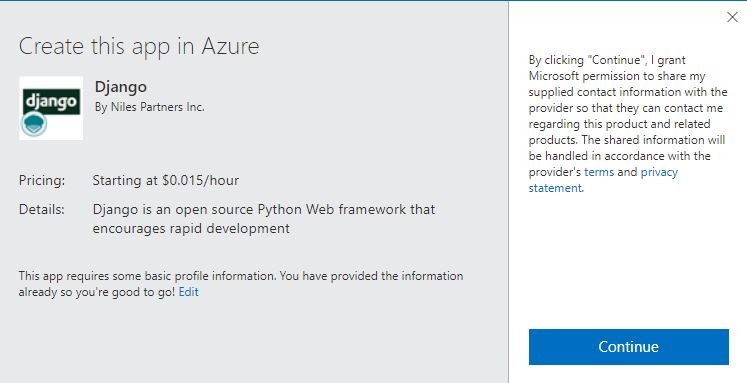
Now click on create
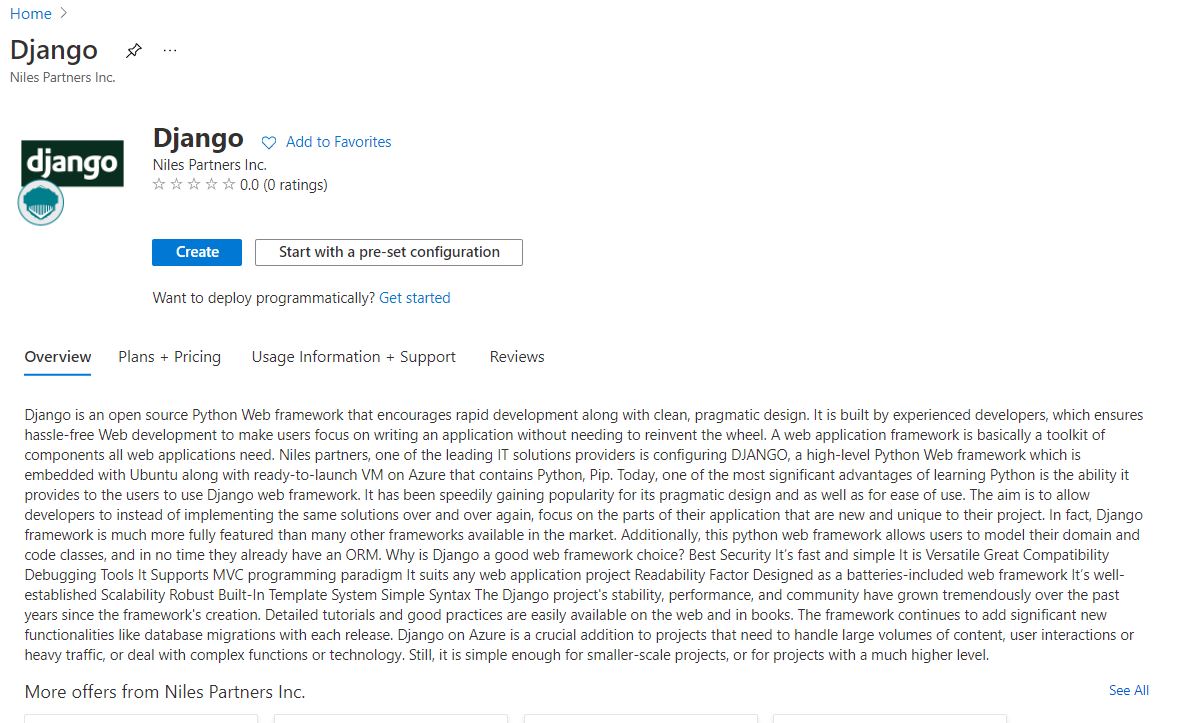
Step 2: Now to create a virtual machine, enter or select appropriate values for zone, machine type, resource group and so on as per your choice.
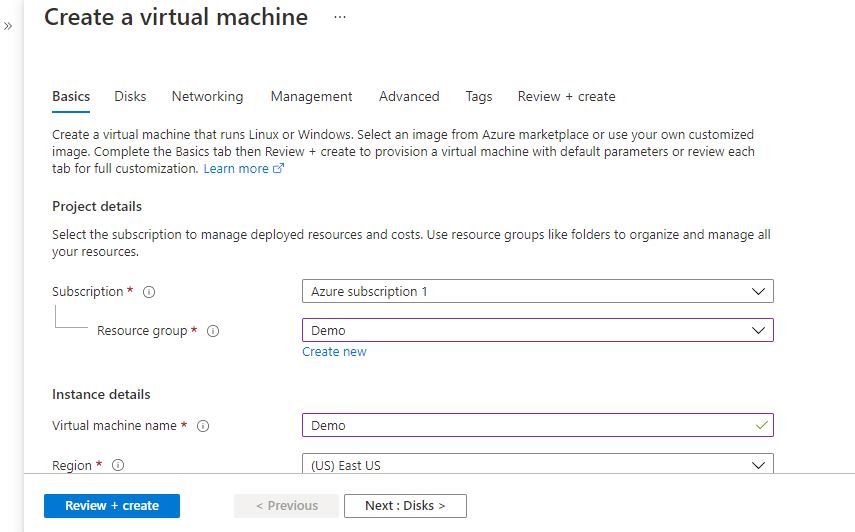
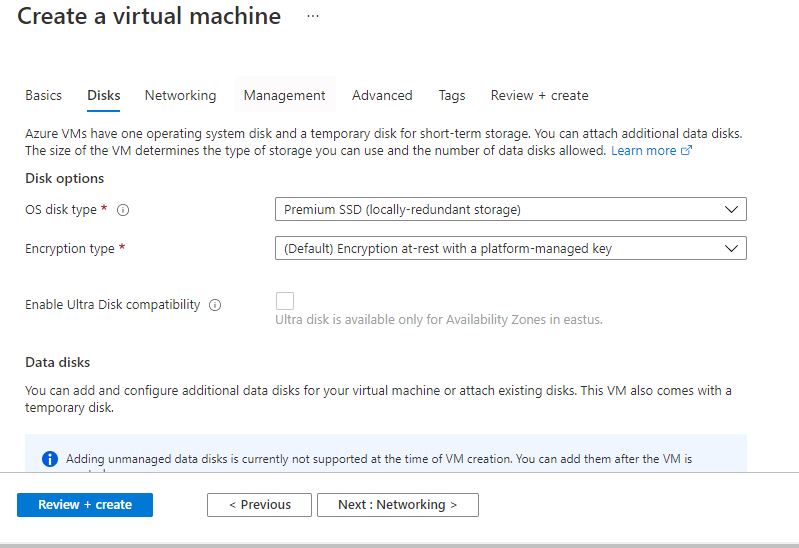
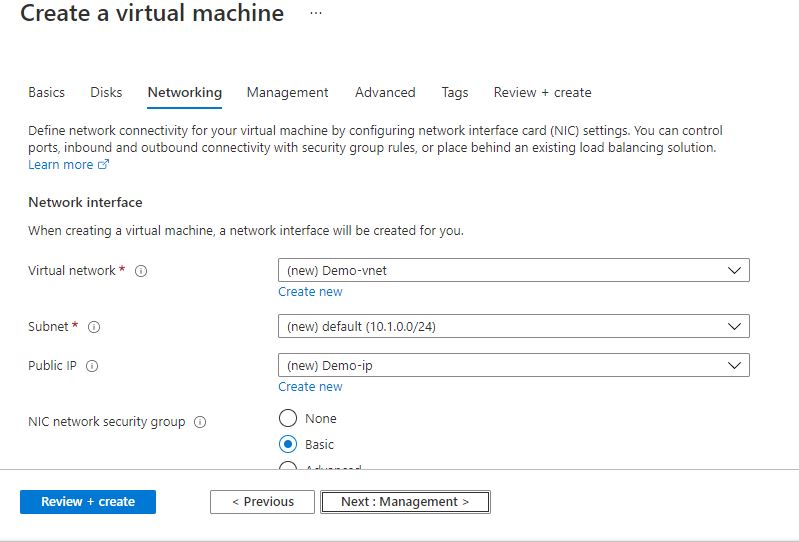
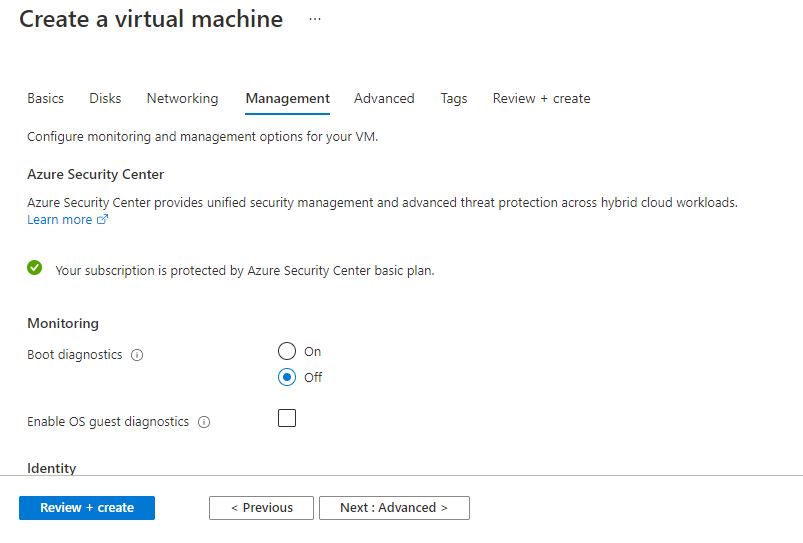
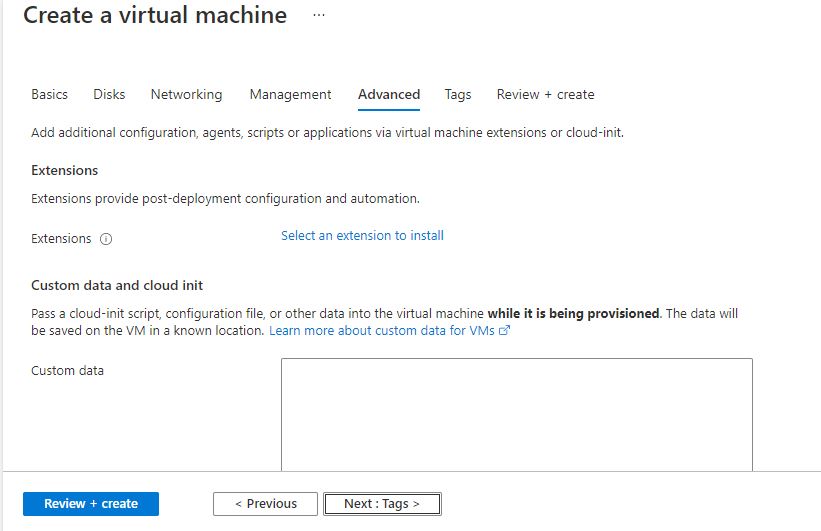
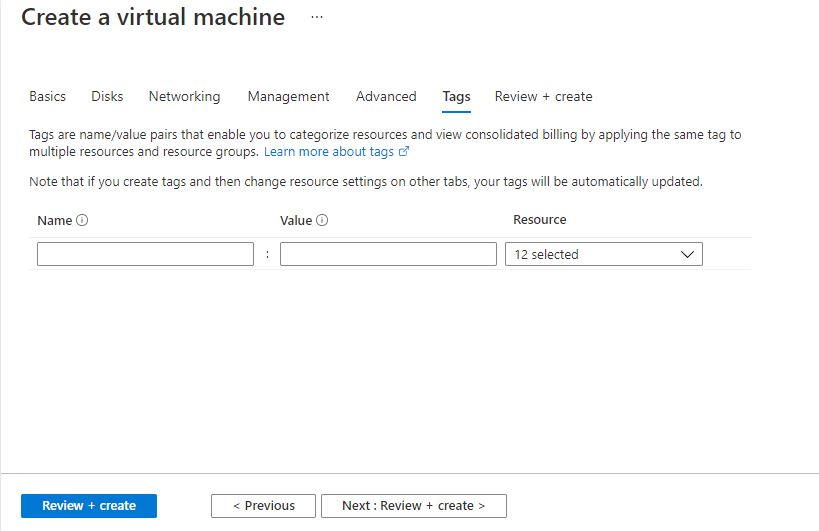
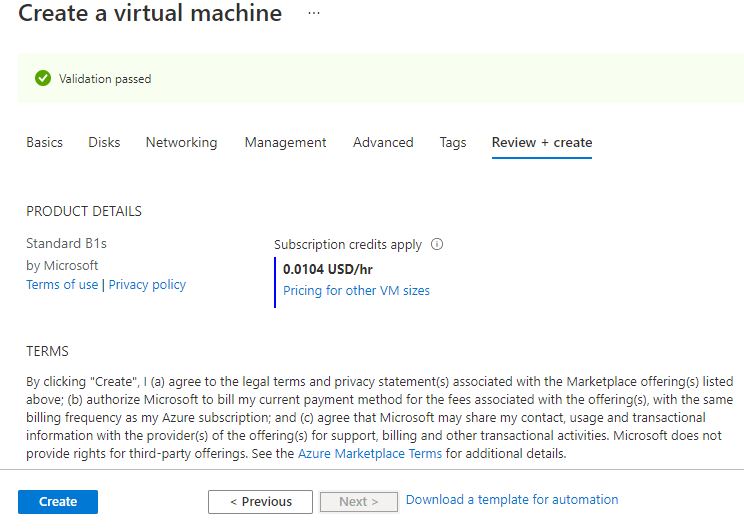
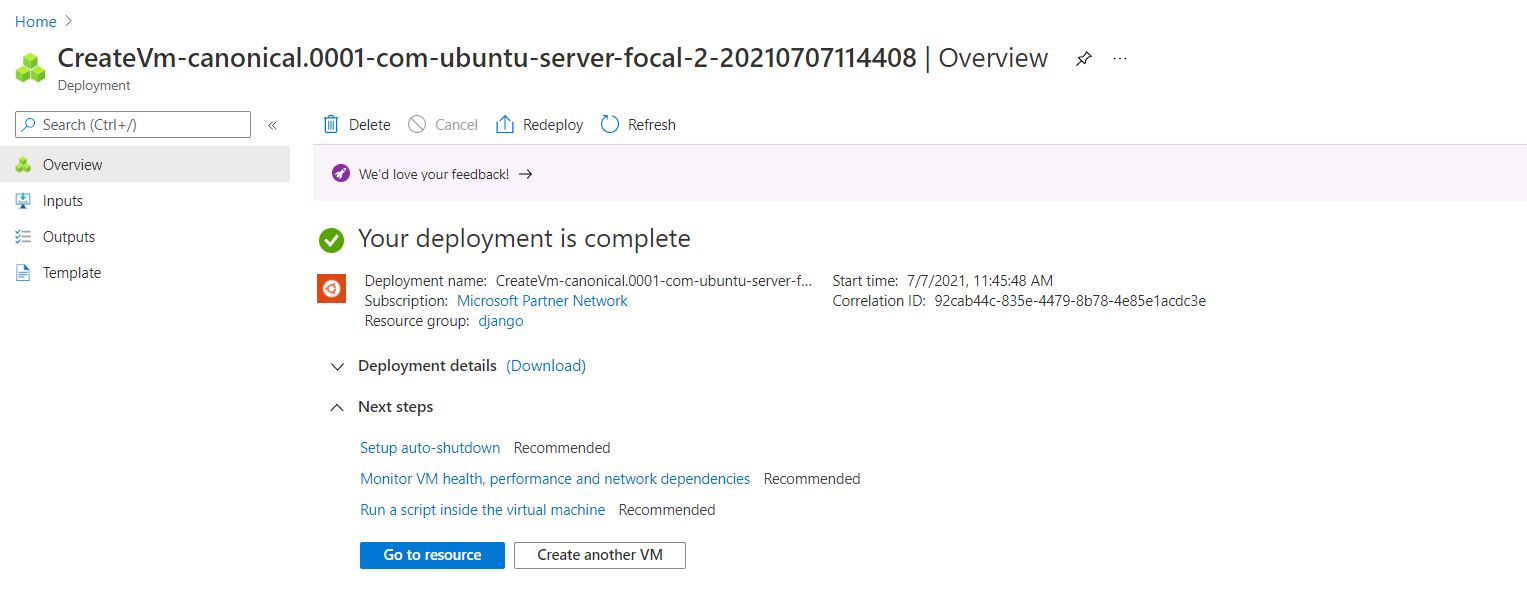
Step 3: Use the browser to access the application at http://<instance ip address> replace <instance ip address> with the actual ip address of the running instance.
Note: You will get the Instance IP Address as shown in the screenshot below:

To access the application:
Step 3: Type the following commands after doing SSH into the machine as shown in screens below in the order as shown:
- sudo su
- cd /var/www/html/
- django-admin startproject yourapp
- cd yourapp/
- python3 manage.py migrate
Note: yourapp must be replaced with the application name you want to set-up. In this tutorial we have used yourapp.
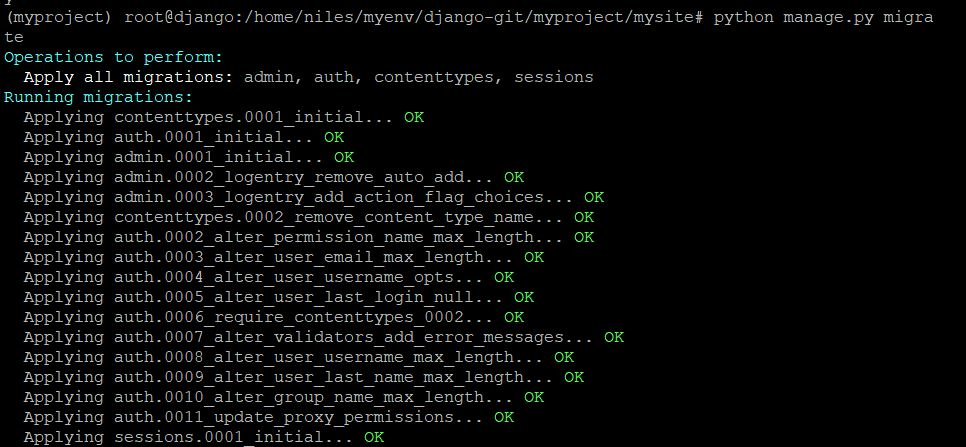
Note: below command will add a user to your environment and you can set a password as you like for that user.
- python3 manage.py createsuperuser

- vi yourapp/settings.py
Note: Change the “ALLOWED_HOSTS” to the public ip of your instance as shown below:
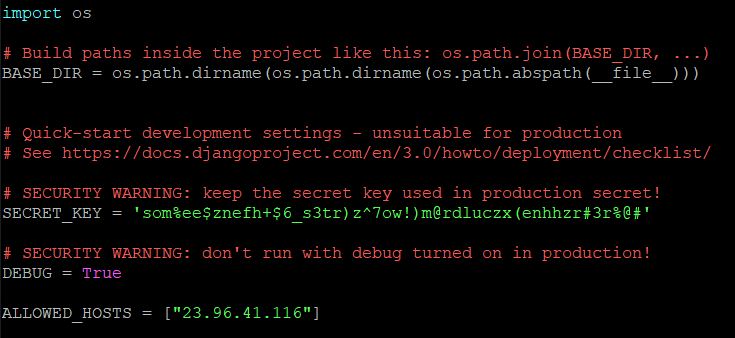
- python3 manage.py runserver 0.0.0.0:8000

Step 3: Hit the ip on browser as <ip address>:8000
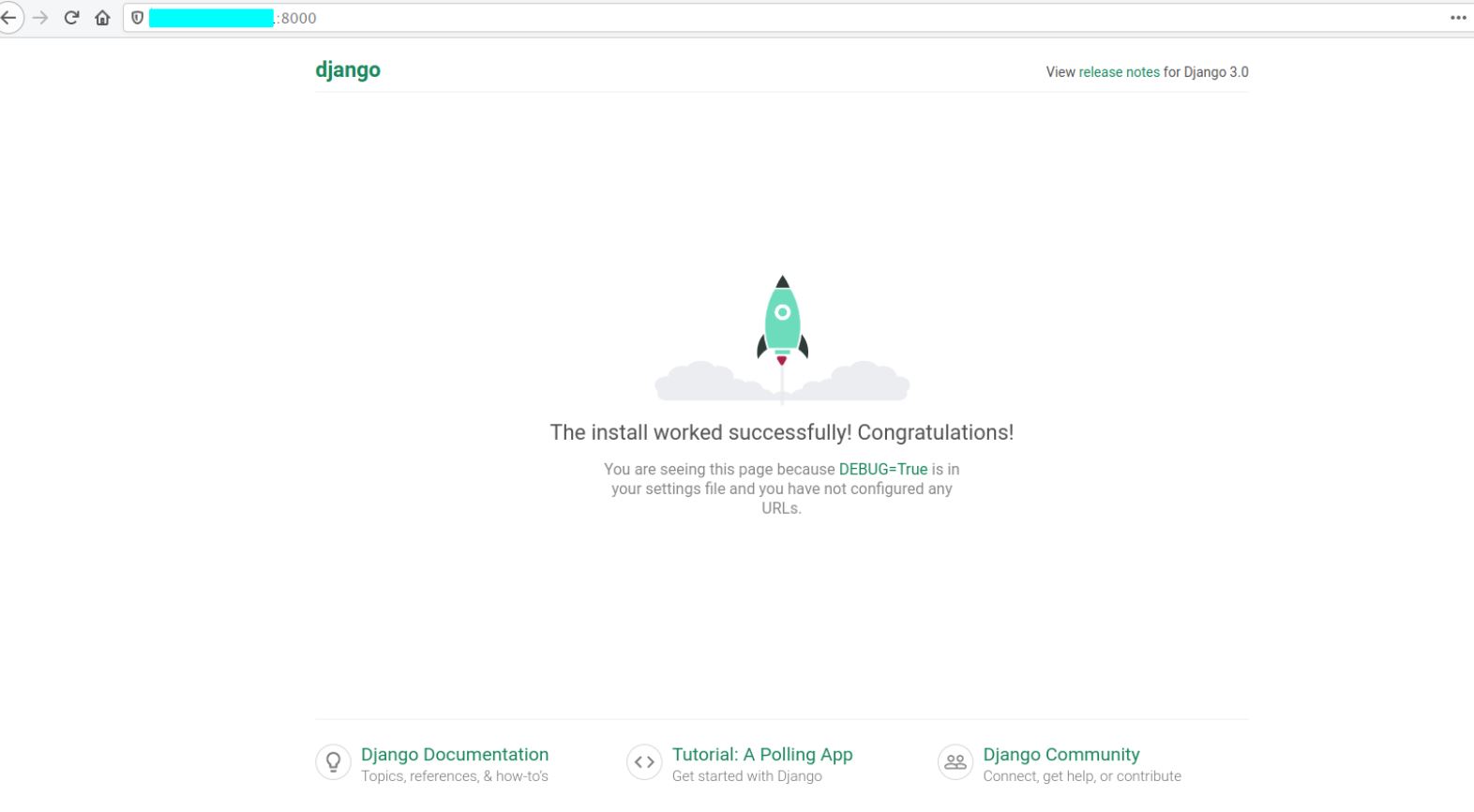
Next, add the ‘admin’ path on the address bar and you will get the Django admin login page.
Type your username and password, then click the ‘Login’ button.
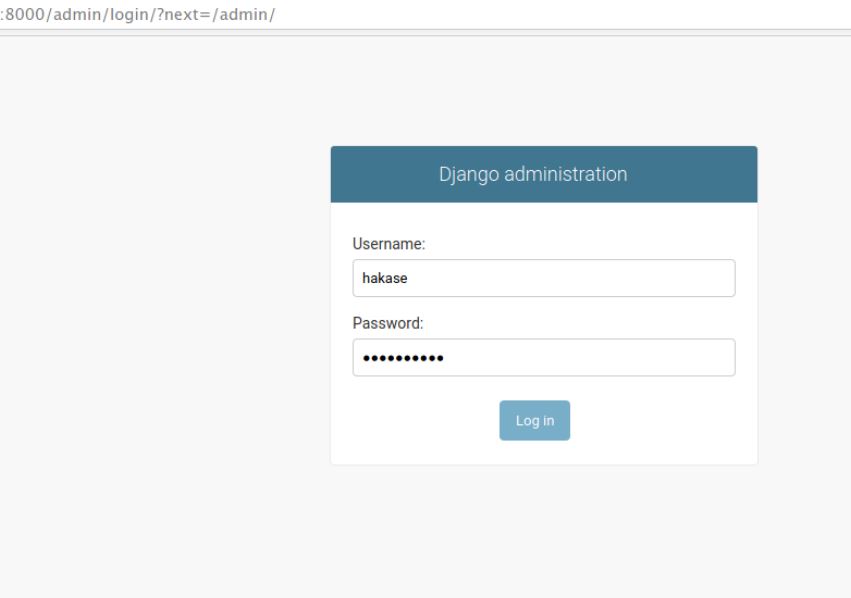
And you will get the default Django admin dashboard as below.

- (510) 298-5936
Submit Your Request
Until now, small developers did not have the capital to acquire massive compute resources and ensure they had the capacity they needed to handle unexpected spikes in load. Amazon EC2 enables any developer to leverage Amazon’s own benefits of massive scale with no up-front investment or performance compromises. Developers are now free to innovate knowing that no matter how successful their businesses become, it will be inexpensive and simple to ensure they have the compute capacity they need to meet their business requirements.
The “Elastic” nature of the service allows developers to instantly scale to meet spikes in traffic or demand. When computing requirements unexpectedly change (up or down), Amazon EC2 can instantly respond, meaning that developers have the ability to control how many resources are in use at any given point in time. In contrast, traditional hosting services generally provide a fixed number of resources for a fixed amount of time, meaning that users have a limited ability to easily respond when their usage is rapidly changing, unpredictable, or is known to experience large peaks at various intervals.
Traditional hosting services generally provide a pre-configured resource for a fixed amount of time and at a predetermined cost. Amazon EC2 differs fundamentally in the flexibility, control and significant cost savings it offers developers, allowing them to treat Amazon EC2 as their own personal data center with the benefit of Amazon.com’s robust infrastructure.
When computing requirements unexpectedly change (up or down), Amazon EC2 can instantly respond, meaning that developers have the ability to control how many resources are in use at any given point in time. In contrast, traditional hosting services generally provide a fixed number of resources for a fixed amount of time, meaning that users have a limited ability to easily respond when their usage is rapidly changing, unpredictable, or is known to experience large peaks at various intervals.
Secondly, many hosting services don’t provide full control over the compute resources being provided. Using Amazon EC2, developers can choose not only to initiate or shut down instances at any time, they can completely customize the configuration of their instances to suit their needs – and change it at any time. Most hosting services cater more towards groups of users with similar system requirements, and so offer limited ability to change these.
Finally, with Amazon EC2 developers enjoy the benefit of paying only for their actual resource consumption – and at very low rates. Most hosting services require users to pay a fixed, up-front fee irrespective of their actual computing power used, and so users risk overbuying resources to compensate for the inability to quickly scale up resources within a short time frame.
No. You do not need an Elastic IP address for all your instances. By default, every instance comes with a private IP address and an internet routable public IP address. The private address is associated exclusively with the instance and is only returned to Amazon EC2 when the instance is stopped or terminated. The public address is associated exclusively with the instance until it is stopped, terminated or replaced with an Elastic IP address. These IP addresses should be adequate for many applications where you do not need a long lived internet routable end point. Compute clusters, web crawling, and backend services are all examples of applications that typically do not require Elastic IP addresses.
You have complete control over the visibility of your systems. The Amazon EC2 security systems allow you to place your running instances into arbitrary groups of your choice. Using the web services interface, you can then specify which groups may communicate with which other groups, and also which IP subnets on the Internet may talk to which groups. This allows you to control access to your instances in our highly dynamic environment. Of course, you should also secure your instance as you would any other server.
Highlights
- Designed as a batteries-included web framework
- It’s well-established
- Scalability